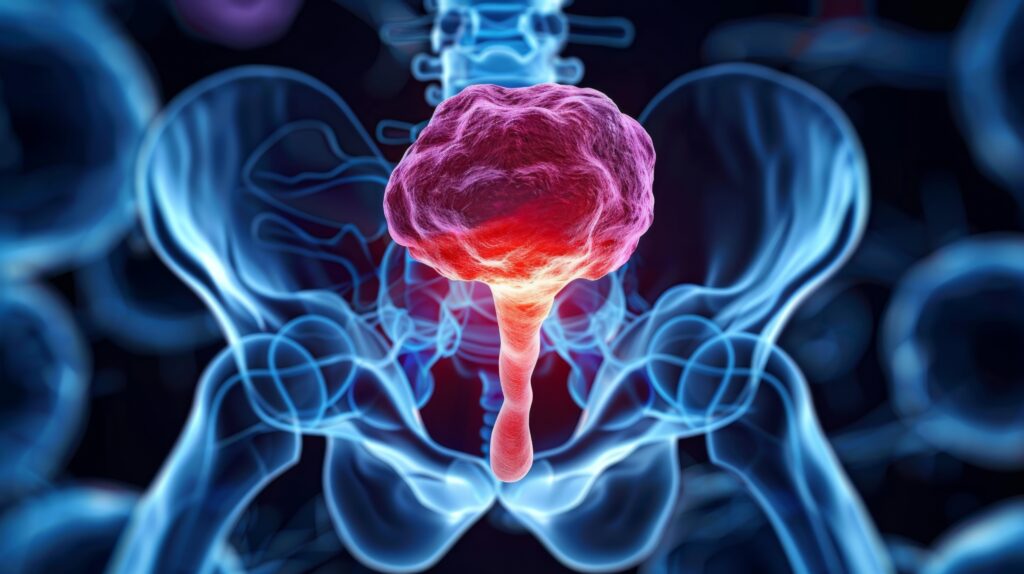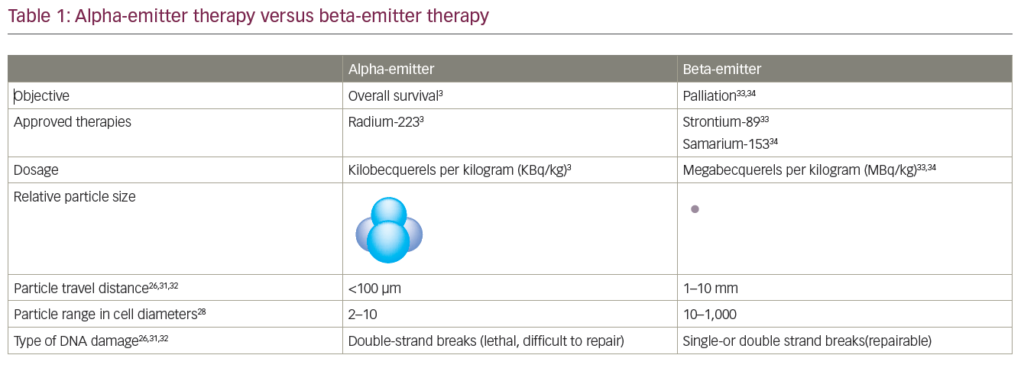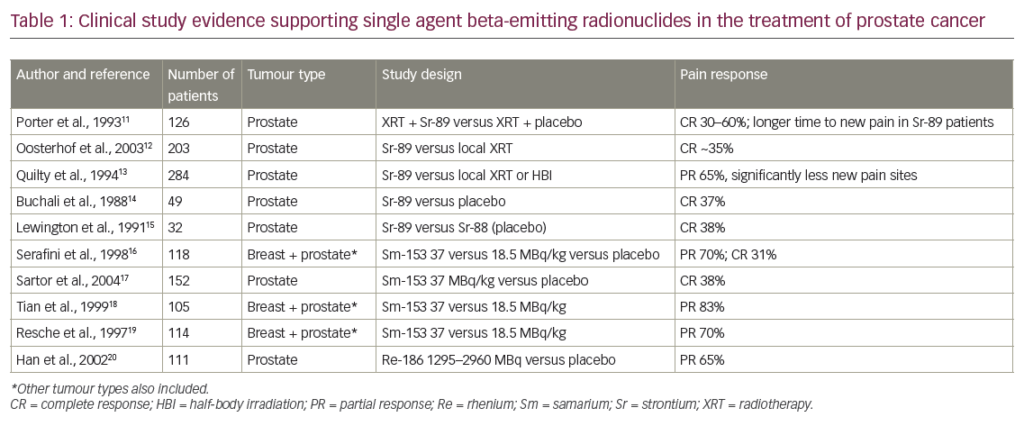The combination of external beam radiotherapy (EBRT) with brachytherapy boost has become a common treatment approach for prostate cancer patients over the past 15 years.The concept of prostate brachytherapy was first introduced in the early 20th century at Johns Hopkins Hospital under the tutelage of Hugh Hampton Young with the use of transurethral sources for treatment. Unfavorable dosimetric constraints and resultant high rates of complications led to the abandonment of this approach in favor of radical prostatectomy. Subsequently, a retropubic approach under direct visualization was pioneered at the Memorial Sloan-Kettering Cancer Center in New York in the 1960s and 1970s. Unfavorable dosimetry again led to abandonment of this technique.1,2 The use of transrectal ultrasound (TRUS) guidance for permanent prostate brachytherapy was developed in Denmark and first reported by Holm et al. in 1983.3 The technique was further modified by Blasko et al. and introduced as a treatment option in the US in 1987.4 The use of stereoscopic needle placement under realtime ultrasound imaging greatly improved the reliability of needle placement and subsequent radioactive seed distribution. High dose rate (HDR) temporary brachytherapy with Iridium (Ir)-192 has also become increasingly popular with promising efficacy results reported.5,6 The scope of this article focuses on the more widely used permanent low-dose rate brachytherapy performed with either Iodine (I)125 or Palladium (Pd)103.
Brachytherapy is the ultimate conformal radiation technique allowing for high-dose delivery within the prostate with sharp dose fall-off to surrounding structures. The ability to deliver an ablating dose of radiation is evidenced by the report of magnetic resonance spectroscopic imaging (MRSI) metabolic profiles by researchers at University of California San Francisco (UCSF), which demonstrated universal lack of metabolic activity in the prostate by four years post-implant.7 While brachytherapy alone is an excellent method for delivering a high dose to the prostate, for patients at risk of extra-capsular extension the combination of external beam to provide a wider uniform dose margin to the prostate, seminal vesicles, and pelvis at times, combined with brachytherapy boost, has become an widely accepted therapeutic strategy for men with intermediate- to high-risk prognostic factors commonly defined by clinical stage, prostate-specific antigen (PSA), and Gleason score.
Published literature supporting the use of external beam radiotherapy (EBRT) and brachytherapy boost to date is based on single institution retrospective data.8–13 Sylvester et al. reported the Seattle experience with 10-year biochemical relapse-free survival (BRFS) for 232 patients. Patients were treated with 45Gy EBRT followed by brachytherapy boost with either I125 (120Gy) or Pd103 (108Gy). No patients underwent androgen ablation. Biochemical failure was defined as two consecutive rises in PSA.With a median follow-up of 63 months, 10-year BRFS was 86%, 90%, and 48% for low, intermediate, and high-risk groups defined by the D’Amico risk stratification criteria.8 Dattoli et al. reported a series with 163 patients with clinical T1-T3 prostate cancer with Gleason score ≥7 and/or PSA >10ng/ml who underwent EBRT to 41Gy followed by an 80Gy Pd103 boost. One hundred and thirty patients whose pathology specimens were available for central review were included in the analysis.The authors noted a median follow-up for non-failing patients of seven years with 118 patients followed for longer than five years. The actuarial rate of freedom from biochemical progression, defined as PSA ≤2ng/ml at time of last follow-up,was 79%.9
Others have reported promising results with shorter follow-up. Merrick reported five-year actuarial biochemical freedom from failure of 80% in 65 patients treated with combined therapy, with high-risk disease defined as having two or three risk factors including Gleason score ≥7, PSA ≥10ng/ml, and clinical stage ≥T2b.10 Singh et al. performed a matched-pair analysis of combined therapy compared with EBRT alone with 80 patients per treatment group. Five-year biochemical failure free survival was 86% for combined therapy compared with 72% with external beam to a minimum planning target dose of 70.2Gy. It was noted that 80% of patients received androgen deprivation.11 Copp et al. reported a 79% rate of freedom from biochemical failure at four years in 93 intermediate- to high-risk patients treated with EBRT, brachytherapy, and androgen suppression.12 Critz et al. reported results using an approach with upfront brachytherapy, with I125 to a median dose of 120Gy followed three weeks later by a six-week course of EBRT for an additional 45Gy. Patients with Gleason ≥7, PSA ≥10ng/ml, or prostatic base involvement received an additional 7.5Gy boost to the prostate and seminal vesicles.With a median follow-up of four years in 689 patients with clinical T1–T2 disease, they reported a five-year biochemical relapse-free survival of 88% as defined by maintenance of a PSA nadir of 0.2ng/ml or less.9 The median pre-treatment PSA was 7.5ng/ml. Extrapolation of these results to other series is made difficult by stratification of patients only by PSA and therefore inclusion of many patients typically stratified as low-risk. With the potential for added toxicity with combined treatment and similar biochemical results reported for brachytherapy alone in low-risk patients, the routine use of combined therapy in the low-risk population appears unwarranted. For patients with adverse risk factors, combined EBRT and brachytherapy with consideration for the addition of androgen deprivation is supported by published results to date.
In addition to tumor eradication, an important consideration for men contemplating treatment choices is quality of life post-treatment.The published data to date suggests an acceptable side effect profile with combined therapy, albeit with some suggestion of significant acute and long-term toxicity at times.14–20 As expected, the principal toxicities experienced by patients undergoing combined therapy are related to urinary, bowel, and sexual function. Sexual function may be affected to a greater degree with combined therapy as opposed to brachytherapy alone, as suggested by an analysis of the CaPSURE™ database utilizing validated quality of life instruments.14 Apart from sexual side effects, a review of the literature reveals the most commonly noted toxicities to include urinary obstructive symptoms, frequency, and dysuria. Typically, symptoms peak in the first several months following therapy with return to or close to baseline in most patients within one to two years. Increased rates of rectal bleeding, compared with EBRT or brachytherapy alone, attributable to the high dose received by the anterior rectal wall, has been noted in at least one reported series.15 Fortunately, severe rectal toxicities including fistulas or the need for colostomy are very rare when the procedure is performed by experienced physicians.
Despite the growing popularity of combined EBRT and brachytherapy boost for men with adverse risk factors, there are no completed phase III trials comparing this approach with other commonly used prostate cancer treatments to date. Currently, a phase III trial, is being conducted by the Radiation Therapy Oncology Group (RTOG 0232) comparing the use of brachytherapy alone with external beam and brachytherapy. Eligible patients have intermediate risk prostate cancer as defined by clinical T1b–T2b with either a Gleason score of seven and a PSA of less than 10 or a Gleason score of less than seven and a PSA of 10–20. Typical of eligibility criteria in common use, a prostate gland size of >60cc, prior history of transurethral resection of the prostate (TURP), or similar procedures for benign prostatic hyperplasia (BPH) and American Urological Association (AUA) symptom index score of more than 15 are excluded. Patients are randomized to either brachytherapy alone to a dose of 145Gy with I125 or 120Gy with Pd103 compared with 45Gy EBRT followed by either 110Gy or 100Gy boost with I125 or Pd103, respectively.
Two phase II cooperative group studies assessing feasibility, toxicity, and with longer follow-up treatment efficacy of combined EBRT and brachytherapy have been completed in the US. Prior to initiation of the RTOG phase III trial, a phase II trial was completed by the RTOG with the primary end-point of verifying acceptable rates of long-term grade III toxicity. Patients received 45Gy EBRT to the prostate and seminal vesicles followed two to six weeks later by a boost of 108Gy with I125.Twenty-seven per cent of patients received androgen suppression, which was left to the decision of the treating physicians. One hundred and thirty-eight patients were enrolled. Acute grade 3 toxicity occurred in 7.6% of patients and the rate of grade III long-term toxicity at 18 months was 3.3%. No grade 4 or 5 toxicity occurred.21 The findings were noted to be consistent with prior single institution reports supporting the safety profile of combined therapy.The Cancer and Leukemia Group B has also recently completed a phase II feasibility trial of combined EBRT and brachytherapy for intermediate risk patients.All patients received androgen suppression for six months combined with 45Gy EBRT and 100Gy (I125) or 90Gy (Pd103) brachytherapy boost performed two to four weeks after completion of EBRT. A total of 63 patients were enrolled on the Cancer and Leukemia Group B (CALGB) trial with a preliminary report on toxicity anticipated in 2006. With additional follow-up, both of these cooperative group phase II trials will provide assessment of treatment efficacy.
The combination of EBRT with brachytherapy boost for the treatment of men with adverse-risk, clinically localized disease is an attractive strategy to ensure regional coverage while providing a high radiation dose to the prostate. Single institutional retrospective data support the hypothesis that excellent results can be achieved with acceptable toxicity. Mature analyses of now completed cooperative group phase II studies and the on-going phase III RTOG study will provide further clarification of the role of this innovative treatment strategy in the management of prostate cancer.■
Combined External Beam Radiotherapy and Brachytherapy for the Management of Prostate Cancer
Article
References
- Whitmore W F, Hilaris B, Grabstad H, “Retropubic implantation of iodine 125 in the treatment of prostate cancer”, J. Urol. (1972);108: p. 918.
- Zelefsky M J, Whitmore W F, “Long-term results of retropubic permanent 125iodine implantation of the prostate for clinically localized prostatic cancer”, J. Urol. (1997);15: p. 23.
- Holm H H, Juul N, Pedersen J F, Hansen H, Stroyer I,“Transperineal 125iodine seed implantation in prostate cancer guided by transrectal ultrasonography”, J. Urol. (1983);130: pp. 283–286.
- Blasko J C, Ragde H, Grimm P D,“Transperineal ultrasound-guided implantation of the prostate: morbidity and complications”, Scand. J. Urol. Nephrol. Suppl. (1991);137: pp. 113–118.
- Galalae R M, Martinez A, Mate T, Mitchell C, Edmundson G, Nuernberg N, Eulau S, Gustafson G, Gribble M, Kovacs G, “Long-term outcome by risk factors using conformal high-dose-rate brachytherapy (HDR-BT) boost with or without neoadjuvant androgen suppression for localized prostate cancer”, Int. J. Radiat. Oncol. Biol. Phys. (March 15 2004);58(4): pp. 1,048–1,055.
- Demanes D J, Rodriguez R R, Schour L, Brandt D,Altieri G,“High-dose-rate intensity-modulated brachytherapy with external beam radiotherapy for prostate cancer: California endocurietherapy’s 10-year results”, Int. J. Radiat. Oncol. Biol. Phys. (April 1 2005);61(5): pp. 1,306–1,316 (review).
- Pickett B,Ten Haken R K, Kurhanewicz J, Quyyum A, Shinohara K, Fein B, Roach M, “Time to metabolic atrophy after permanent prostate seed implantation based on magnetic resonance spectroscopic imaging”, Int. J. Radiation Oncology Biol. Phys. (2004);59(3): pp. 665–673.
- Dattoli M,Wallner K,True L, Cash J, Sorace R, “Long-term outcomes after treatment with external beam radiation therapy and palladium 103 for patients with higher risk prostate cancer”, Cancer (2003);97(4): pp. 979–983.
- Merrick G S, Butler W M, Lief J H, Galbreath R W,Adamovich E,“Biochemical outcome for hormone naïve patients with highrisk prostate cancer managed with permanent interstitial brachytherapy and supplemental external-beam radiation”, Cancer J. (2002);8: pp. 322–327.
- Singh A M, Gagnon G, Collins B, Niroomand-Rad A, McRae D,Zhang Y, Regan J, Lynch J, Dritschilo A,“Combined external beam radiotherapy and Pd-103 brachyhterapy boost improves biochemical failure free survival in patients with clinically localized prostate cancer: Results of a matched pair analysis”, Prostate (2005);62: pp. 54–60.
- Copp H, Bissonette E A,Theodorescu D,“Tumor controloutcomes of patients treated with trimodality therapy for locally advanced prostate cancer”, Urology (2005);65: pp. 1,146–1,151.
- Critz F A,Williams W H, Levinson A K, Benton J B, Holladay C T, Schnell F J,“Simultaneous irradiation for prostate cancer: Intermediate results with modern techniques”, J. Urol. (2000);164: pp. 738–743.
- Speight J L, Elkin E P, Pasta D J, Silva S, Lubeck D P, Carroll P R, Litwin M S,“Longitudinal assessment of changes in sexual function and bother in patients treated with external beam radiotherapy or brachytherapy, with and without neoadjuvant androgen ablation: Data from capsure”, Int. J. Radiation Oncology Biol. Phys. (2004);60(4): pp. 1,066–1,075.
- Albert M,Tempany C M, Schultz D, Chen M H, Cormack R A, Kumar S, Hurwitz M D, Beard C,Tuncali K, O’Leary M, Topulos G P,Valentine K, Lopes L, Kanan A, Kacher D, Rosato J, Kooy H, Jolesz F, Carr-Locke D L, Richie J P, D’Amico A V, “Late genitourinary and gastrointestinal toxicity after magnetic resonance image-guided prostate brachytherapy with or without neoadjuvant external beam radiation therapy”, Cancer (September 1 2003);98(5): pp. 949–954.
- Chen C T,Waterman F M,Valicenti R K, Gomella L G, Strup S E, Dicker A P, “Dosimetric analysis of urinary morbidity following prostate brachytherapy (I125 vs. 103Pd) Combined with external beam radiation therapy. 2002.”, Int. J. Cancer (Radiat. Oncol. Invest.) (2001)96(suppl.): pp. 83–88.
- Gelblum D Y, Potters L, “Rectal complications associated with transperineal interstitial brachytherapy for prostate cancer”, Int. J. Radiat. Oncol. Biol. Phys. (2000);48: pp. 119–124.
- Ghaly M,Wallner K, Merrick G et al., “The effect of supplemental beam radiation on prostate brachytherapy-related morbidity: Morbidity outcomes from two prospective randomized multicenter trials”, Int. J. Radiat. Oncol. Biol. Phys. (2003);55: pp. 1,288–1,293.
- Kang S K, Chou R H, Dodge R K et al., “Gastrointestinal toxicity of transperineal interstitial prostate brachytherapy”, Int. J. Radiat. Oncol. Biol. Phys. (2002);53: pp. 99–103.
- Sarosdy M F,“Urinary and rectal complications of contemporary permanent transperineal brachytherapy for prostate carcinoma with or without external beam radiation therapy”, Cancer (2004);101: pp. 754–760.
- Lee W R, Desilvio M, Lawton C, Gillin M, Morton G, Firat S, Baikadi M, Kuettel M, Greven K, Sandler H,“A Phase II study of external beam radiotherapy combined with permanent source brachytherapy for intermediate-risk, clinically localized adenocarcinoma of the prostate: preliminary results of RTOG P-0019”, Int. J. Radiat. Oncol. Biol. Phys. (November 10 2005).
Further Resources

Trending Topic
It is with great pleasure that we present the latest edition of touchREVIEWS in Oncology & Haematology. This issue highlights the remarkable progress and innovation shaping the fields of oncology and haematology, featuring articles that delve into both emerging therapies and the evolving understanding of complex malignancies. We open with an editorial by Mohammad Ammad […]
Related Content in Prostate Cancer

Metastatic castration-resistant prostate cancer (mCRPC) represents the most formidable stage of prostate cancer (PCa) and is responsible for the majority of PCa-related mortalities. This advanced form of the disease typically evolves from less aggressive stages.1 PCa is broadly categorized into ...

Androgen deprivation therapy (ADT) has been the cornerstone of the treatment of metastatic prostate carcinoma for over 70 years, ever since Huggins and Hodges first treated men with prostate carcinoma with orchidectomy or oestrogen injection in 1941.1 However, the treatment landscape of ...

Treatment for prostate cancer impacts the health-related quality of life of men. Patient-reported outcome (PRO) data from prospective, investigator-initiated clinical trials have shown that effects are seen on the urinary, bowel, and sexual function domains and, to a lesser extent, ...

Prostate cancer is one of the leading causes of cancer death worldwide.1 However, the emergence of novel hormonal therapies and the increasing availability of sensitive next-generation imaging techniques, such as gallium-88 prostate-specific membrane antigen (PSMA)-targeted positron emission tomography (PET), ...

The American Cancer Society estimates that approximately 248,530 new cases of prostate cancer will be diagnosed in the United States in 2021.1 For the nearly 90% of patients diagnosed with locoregional prostate cancer, the goal of treatment by surgical intervention or radiation is ...

Prostate cancer is the second most common cause of cancer mortality in men, with most deaths occurring as a result of metastatic disease that has become resistant to androgen deprivation therapy (ADT).1 Most recently, immunotherapy, in the form of immune ...

Prostate cancer is the most common cancer and the third leading cause of cancer-related death amongst men in Europe.1 Established treatment options for early-stage disease include surgery, radiation therapy and active surveillance,2 whereas patients presenting with advanced disease usually receive ...

Welcome to the summer edition of European Oncology and Haematology. This issue features a wide variety of articles that illustrate the increasingly personalised, multidisciplinary approach to the management of cancer and haematological diseases. We begin with three expert interviews, which ...

Targeted alpha therapy (TAT) is the delivery of high-energy alpha particles to cancer cells and the tumour microenvironment to treat cancer. After a survival benefit was shown for radium-223 versus standard of care in patients with metastatic castration-resistant prostate cancer (...

Proton beam therapy is a type of radiotherapy that employs a high energy beam of protons rather than high energy X-rays to deliver a dose of radiotherapy for patients with cancer.1 The UK has been involved in the development of ...

Prostate cancer (PC) has probably afflicted males in mid- to late life since humans evolved; evidence indicates that it has been a likely cause of death for thousands of years. DNA analysis of bone marrow from preserved human remains of ...

Prostate cancer is the most common malignancy in the adult male population with incidence increasing with age. Approximately 15–40% of patients with prostate cancer will relapse after radical treatment for early disease.1 Salvage treatment is often considered for those with local ...
Latest articles videos and clinical updates - straight to your inbox
Log into your Touch Account
Earn and track your CME credits on the go, save articles for later, and follow the latest congress coverage.
Register now for FREE Access
Register for free to hear about the latest expert-led education, peer-reviewed articles, conference highlights, and innovative CME activities.
Sign up with an Email
Or use a Social Account.
This Functionality is for
Members Only
Explore the latest in medical education and stay current in your field. Create a free account to track your learning.

